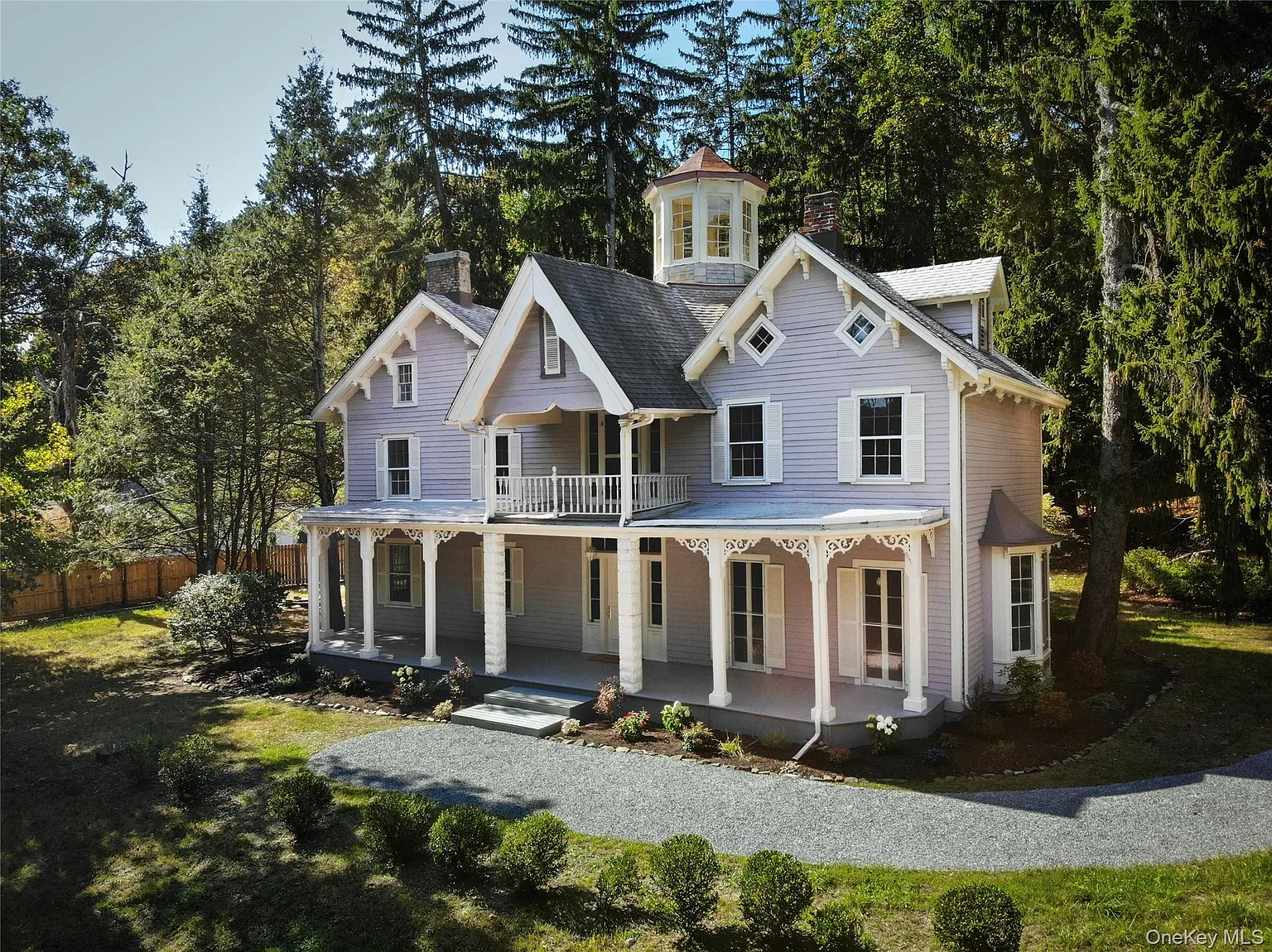Walkabout: Charity Starts at Home, Part 1
The measure of any society is in how it takes care of those not able to take care of themselves. In the Victorian Age, charity was a serious subject for the upper classes. It was thought the proper thing to do to help only those they considered the deserving poor. This was at a time…


The measure of any society is in how it takes care of those not able to take care of themselves. In the Victorian Age, charity was a serious subject for the upper classes.
It was thought the proper thing to do to help only those they considered the deserving poor. This was at a time when there was no government safety net of any kinds whatsoever.
Religious institutions also had a mandate to serve those in their communities who were poor, widowed, orphaned or sick.

There were many charitable institutions in all of Brooklyn’s communities, but central Brooklyn, then, as now, had the greatest number of charities and facilities, more than any other part of Brooklyn. Today, only a small number of these buildings remain, reminders of the social conscience of their times.
There were both secular and religious based institutions. The areas we now call Crown Heights and Bedford Stuyvesant had an abundance of both. Because they were mostly developed in the latter part of the 19th century, institutions, hospitals and homes ended up being congregated in the community because there was plenty of space for large buildings.
Today I’ll highlight some of the secular institutions; Thursday will be about the religious based institutions.
There were thousands of orphaned children roaming the streets of late 19th century New York. In central Brooklyn, they were housed in the Church Charity Foundation on Albany and Herkimer, the Orphan Asylum of the City of Brooklyn at Atlantic and Kingston,(1872) the Truant Home at Empire and Nostrand, in 1857, the Children’s Home, at Sterling and Brooklyn, as well as a Hebrew Orphanage at Ralph and Pacific, (1879), and the Howard Colored Orphanage at Dean and Troy. (1866) None of these buildings remain.

There were many hospitals and institutions treating all manner of diseases and maladies, many more than we have today.
The secular ones in Crown Heights alone, included the Swedish Hospital, at Bedford and Dean (1902), Brooklyn Women’s Hospital, Eastern Parkway, Lefferts General Hospital, at Brooklyn and ENY Ave, Carson Peck Memorial at Crown and Albany Ave, (1919), Unity Hospital on St. John’s Place, Thoracic Hospital at St. John’s and Kingston, the Home for Nervous Invalids, on St Marks Ave, Kings County Asylum for Chronic Insane and Alms House, and the Home for Habitues, which was on Brooklyn Ave near Park Place (1902) for those addicted to cocaine, chloral and opium.
In Bedford Stuyvesant, the Central Throat Hospital was on Broadway and Howard, and the Hospital for Consumptives was on Kingston and Butler. Both communities also had almost as many hospitals run by various religious groups, which I will list on Thursday. Believe it or not, today, Crown Heights does not have a single open hospital.

On the other side of the law, Crown Heights South was home to Brooklyn’s Penitentiary, once located near where Ebbetts Field rose later, and located in a two block plot at Nostrand, Rogers, President and Crown. Inmates were used as labor in the late 1800’s and were rented out from this location to dig ditches, pave roads, and build foundations.
The prison closed in 1907 and the inmates were transferred to Blackwell’s Island. The grounds were bought by the Jesuits for a college and church, which opened in 1908, and today, is the oldest part of Medgar Evers College, part of SUNY .
To close out, from orphanage to old age, the Zion Home for Colored Aged stood on St. John’s and Kingston Ave, The Home for Aged Men was in Bed Stuy at Classon Ave, The Hospital for Old People was on Chauncey St, also in Bed Stuy, while several religious run old age homes were in the Bed Stuy/Crown Heights area.

The Zion Home is still in use as a senior’s residence, with a modern extension attached, and is now called the Brooklyn Home for the Aged. This is one of the very few buildings to still stand.
The former site of the Thoracic Hospital is now an affordable housing complex, mainly for seniors, located in a large new development that was just finished a few months ago.
One of the Swedish Hospital buildings was replaced by the Chatelaine Hotel, which is now housing; another two buildings stand a few blocks away, one only a wall remaining, next to a former hospital building, now an abandoned church school.
The Orphan Asylum of Brooklyn’s lot is now a playground, and the Howard Colored Orphanage was torn down for a Transit System trolley lot, now a bus repair and parking lot. None of the other buildings mentioned remain, and their lots are all filled with newer buildings. See more on Flickr.
Next time: even more charities and institutions fill up central Brooklyn, these run by religious groups. Many thanks to Wilhelmena Kelly for her research on this subject, published in Bedford Stuyvesant, and Crown Heights and Weeksville for the “Images of America” series of books.





No benson- but anyone who has done research would know that when it comes to the kind of data Ms. Himmelfarb uses, it is not based on a controlled experiment or environment. That is not the nature of historical or social data. And again- no one dismissed it. I said I question her objectivity. Its too bad that you yourself must jump to conclusions and offer your own, very biased interpretations of what I or MM say. And you’re accusing us?
For the record, unless Ms. Himmelfarb was making up statistics or lying about her research sources, there is no reason to question her integrity (a far different issue, I assure you). There is nothing to turn a blind eye to- this type of research is all about interpretion of the data.
I can’t imagine going back to the grim Victorian model of charitable institutions. I am a preservationist but I believe in progress (ie: air conditioning in the brownstone please). The rich still contribute tons of money to not-for-profits that do good works in all fields.
Montrose;
If you go back to my post, I recommended that folks read her work before making any judgments.
Here is the response:
“Himmelfarb, as you well know, is hardly without a political agenda, so I question the objectivity of her work.”
“Ms Himmelfarb is hardly coming from an unbiased point of view. She has long been extremely conservative, is married to Irving Kristol, the father of neoconservativism, and is the mother of William Kristol, the king of intellectual conservativism.”
Note that there is no debate with her actual work or data. None of her statements are actually cited. Rather, her work is dismissed merely because of her association. If she divorced her husband, would she be more credible?
I believe Ms.Himmelfarb was a professor at our own Brooklyn College (hardly known as a bastion of conservatism, I would say). Are you stating that Brooklyn College turned a blind eye to her work merely because of her marriage to a famous political thinker?
Enough for today.
Please show me where either Bxgrl or I said that, because we didn’t. We merely said that she was coming from her own particular place, as do we all. No one dismissed her research, but that does not mean that her conclusions should be accepted as gospel. ANYONE’S conclusions should be examined to see where fact and opinion merge. I don’t blindly accept liberal conclusions either, I make up my own mind, based on neutral facts. How about you stop jumping to your own conclusions?
benson- no one is dismissing it. I said I questioned the objectivity of her findings, which means I wonder how much of her conclusions come out of her neoconservatism. I realized after the McDonough St. thread you take offense at anyone questioning people in authority, or those people you happen to agree with, but that’s your issue, not mine. Ms Himmelfarb’s conclusions are the interpretation of her research, interpretation being the operative word.
And I’ve done enough academic research, and read enough academic research to know how easily the results can be skewed. Unless you are conducting a precisely engineered scientific study with results that can be repeated, any research and conclusion of historical data is going to be interpretive. It can be based on accurate data- but it is still someone interpreting that data- and that is the whole point.
OK, so there we have it folks. Because an acadamic married to a political polemecist, her extensive research should be dismissed.
I’ll keep that in mind when reading these threads.
While I would not argue that some of what the Victorians espoused in their charitable work had a positive result, I don’t think we should run to emulate the whole program, hook, line and sinker. Ms Himmelfarb is hardly coming from an unbiased point of view. She has long been extremely conservative, is married to Irving Kristol, the father of neoconservativism, and is the mother of William Kristol, the king of intellectual conservativism. While many of their opinions sound good on paper, I find them to be very devoid of heart and feeling. People are neither statistics or automatons.
benson- whether or not that’s the case, it doesn’t negate the attitudes. But when you think about it, Victorian society was stricter in every way- I personally think the education level of the average Victorian schoolchild was far superior to what is required today. To our academic detriment. On the other hand, Victorian prejudices meant productive life as maids and butlers for Blacks and Irish girls as nannies. Orphanages trained children to go into certain work only- they weren’t given the choice to become an engineer or an architect. Victorian society was about keeping the status quo- including class distinctions, race distinctions, religious distinctions and a healthy dose of elitism. Himmelfarb, as you well know, is hardly without a political agenda, so I question the objectivity of her work.
It’s very easy today to knock on the Victorians and their attitudes. However, I would suggest that folks read the work of Gertrude Himmelfarb before they make any judgments (Minard, see, I finally go that word right). She has devoted most of her academic work to the study of Victorian institutions, including their charities. Her conclusion, with which I agree, is that the Victorian charities were more effective in actually producing results, i.e. lifting people into a self-sufficient, productive life.